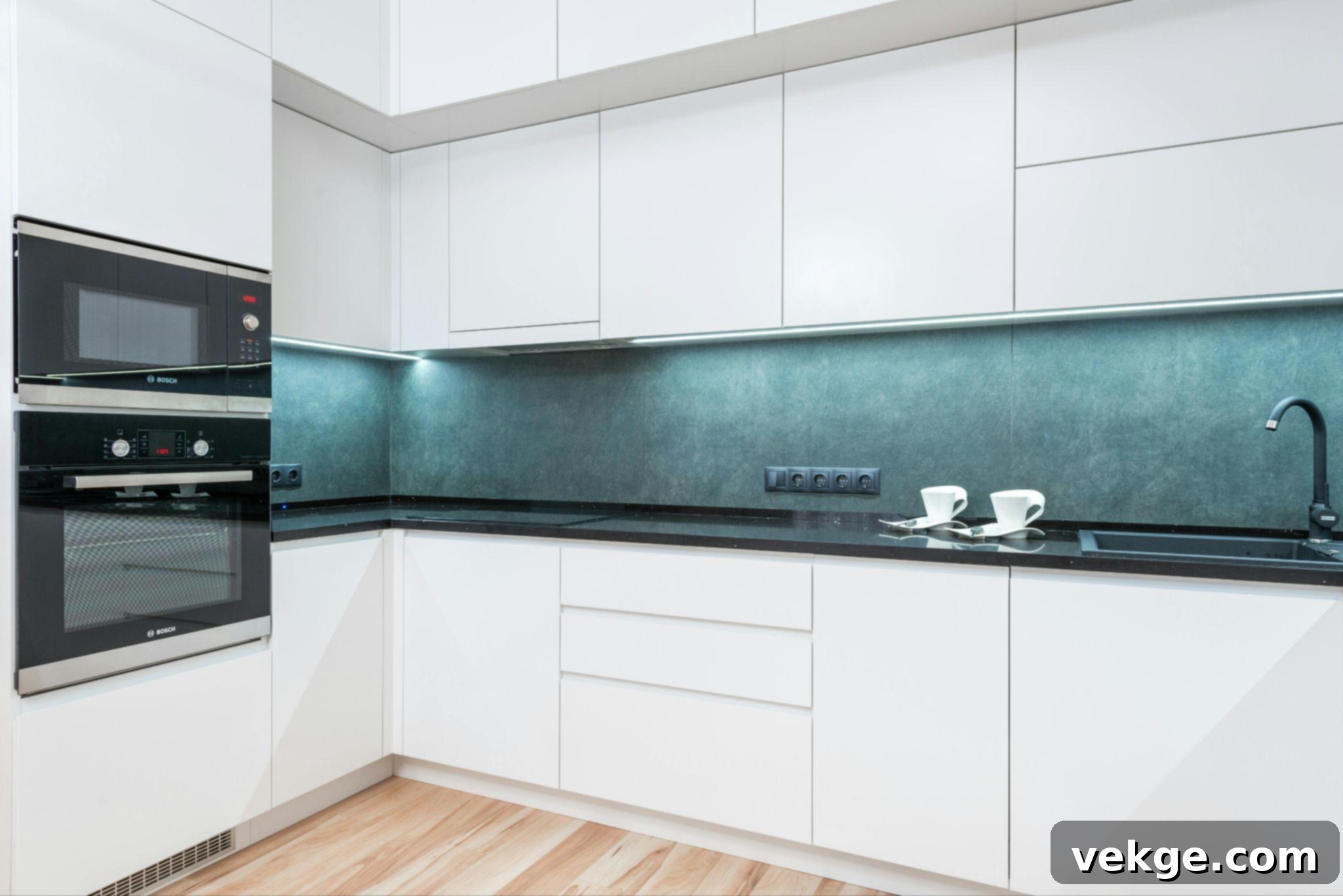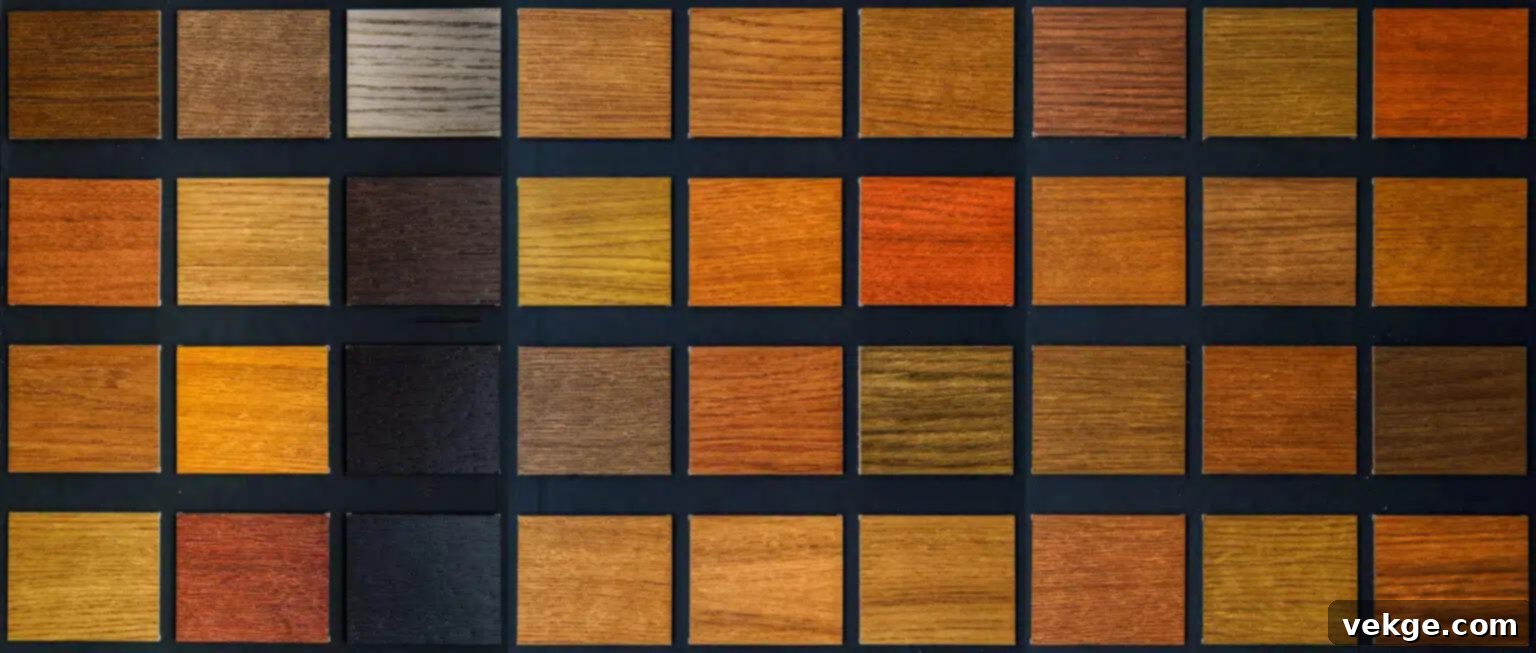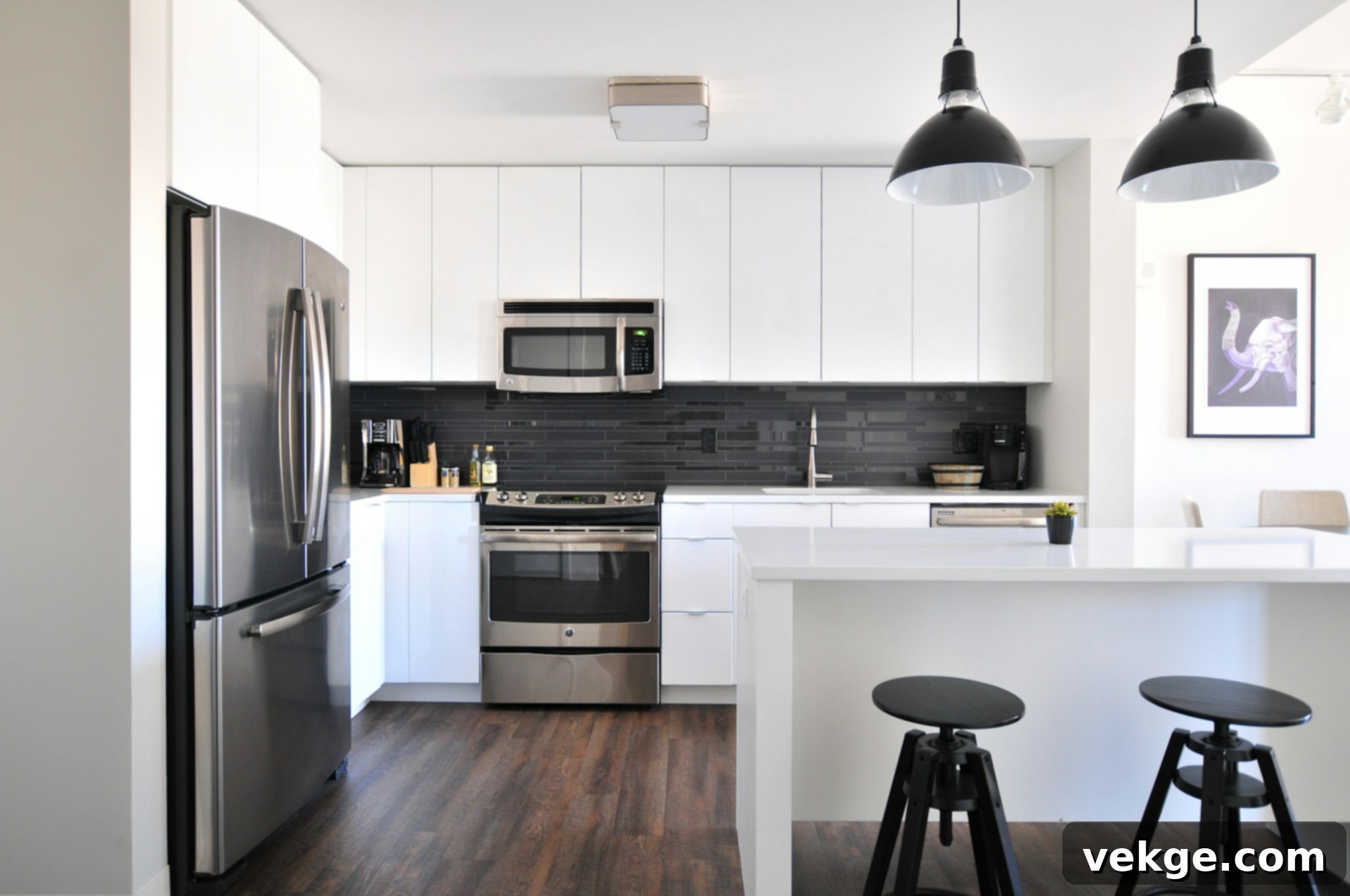Kitchen Cabinet Makeover: Painting, Solid Wood, or Wood Veneer? Your Ultimate Guide to a Stunning Transformation
Is your kitchen starting to feel a little uninspired? Are your cabinets looking tired, dated, or simply not reflecting your current style? Many homeowners dream of a complete kitchen overhaul but quickly get discouraged by the hefty price tags often associated with full renovations. The good news is, achieving a fresh, modern, and beautiful kitchen doesn’t have to mean tearing everything out or taking on a second mortgage.
The secret to an impactful yet attainable kitchen transformation often lies in your cabinets. They are, after all, the focal point of your kitchen’s aesthetic. This comprehensive guide will deep dive into three popular and effective options for revitalizing your kitchen cabinets: cost-effective painting, luxurious solid wood replacement, and the often-overlooked, versatile wood veneer refinishing. We’ll explore the unique benefits, potential challenges, and ideal scenarios for each approach, helping you make the best decision for your home, budget, and lifestyle.
Why Your Kitchen Cabinet Choice Matters More Than You Think
Before we delve into the specifics of each makeover option, let’s understand the profound impact your cabinet choice has on your kitchen. Visually, your kitchen cabinets command approximately 40% of the entire room’s surface area. This means they play a colossal role in defining the style, mood, and overall aesthetic of your kitchen.
Beyond aesthetics, cabinets are arguably the hardest-working components in your kitchen. They endure thousands of openings and closings each year, withstand exposure to steam, grease, spills, and the general wear and tear of daily life. The right cabinet choice will provide years of beautiful, functional, and resilient storage. Conversely, a rushed or ill-informed decision can lead to disappointment, premature wear, and the need for another costly “kitchen cabinet redo” much sooner than you’d like.
Investing wisely in your cabinets is an investment in the long-term enjoyment and value of your home.
Option 1: The Paint Job – Your Most Budget-Friendly & Transformative Friend
For those seeking a dramatic change without a dramatic budget, painting your existing cabinets is an incredibly popular and effective solution. It’s often the first step many homeowners take towards a fresh kitchen aesthetic.
The Low-Cost, High-Impact Transformation
The Investment: Expect to spend approximately $200-$800 for materials if you tackle a full kitchen DIY project. Professional painting can range from $2,000-$7,000+, depending on kitchen size and complexity.
What You’re Getting: A completely refreshed and modernized look for your kitchen with a minimal financial commitment. A well-executed paint job can take even the most outdated, tired cabinets and give them a vibrant new life, making them look as if they belong in a high-end design magazine.
Pros of Painting Your Cabinets:
- Incredibly Budget-Friendly: It’s by far the most economical way to achieve a significant visual upgrade.
- Vast Color Selection: The world is your oyster when it comes to color. You can choose from an almost limitless palette to perfectly match your desired aesthetic.
- Complete Personality Change: A new color can instantly alter the entire mood and style of your kitchen, from bright and airy to dramatic and sophisticated.
- Perfect for Experimentation: If you’re unsure about a bold design choice or want to test a trend, paint allows you to do so without a huge financial risk.
- Relatively Quick Turnaround: A DIY paint project can often be completed over a long weekend or a few dedicated evenings.
- Eco-Friendly Potential: By reusing your existing cabinet boxes and doors, you’re preventing usable materials from ending up in a landfill.
Challenges and Considerations for Painting:
- Extensive Prep Work is Crucial: The success of your paint job hinges entirely on meticulous preparation. This includes thorough cleaning, degreasing, sanding, repairing minor imperfections, and priming. Skipping these steps will lead to poor adhesion and a short-lived finish.
- Durability Concerns: Paint, especially in high-traffic areas or around handles, can chip, scratch, or wear down over time. It requires a good quality, hard-wearing paint specifically designed for cabinets and proper application.
- Won’t Hide Existing Damage: Paint provides a surface finish. It won’t conceal significant structural damage, warped doors, or poor cabinet construction. These issues must be addressed beforehand.
- Limited to Current Style: While the color changes, the fundamental style (e.g., flat panel, raised panel, shaker) and configuration of your cabinets remain the same.
- Time-Consuming DIY: While quick to *change*, the *process* can be tedious and require significant patience and attention to detail.
Is Painting Right for You?
Painting is the ideal choice for homeowners whose cabinets are in good structural condition but simply need a cosmetic facelift. It’s perfect for renters looking for temporary improvements, those on a very tight budget, or anyone wanting to experiment with color before committing to larger, more permanent changes. If you’re willing to put in the elbow grease for prep work, painting offers an incredibly satisfying and cost-effective transformation.

Image Credit: Pexels
Option 2: Solid Wood Replacement – The Premium & Enduring Choice
When budget allows and long-term durability is paramount, replacing your existing cabinet doors and drawer fronts with solid wood is the ultimate premium upgrade. This option offers unmatched beauty, longevity, and a tactile sense of luxury.
The Ultimate in Durability and Timeless Elegance
The Investment: This is a significant investment, typically ranging from $3,000 to $12,000+ for a standard kitchen, depending heavily on the wood species selected, the kitchen’s size, and the intricacy of the door style. This generally covers just the doors and drawer fronts, not entirely new cabinet boxes.
What You’re Getting: You’re investing in the “real deal.” Solid wood cabinets provide an authentic, rich aesthetic, incredible durability, and a classic, timeless appeal that significantly enhances your home’s value.
Advantages of Solid Wood:
- Unrivaled Durability and Longevity: Solid wood is incredibly robust and designed to last for decades, often outliving the home itself with proper care.
- Multiple Refinishing Possibilities: Unlike other materials, solid wood can be sanded down and refinished multiple times throughout its lifespan, allowing you to change its look without replacing it.
- Significant Home Value Addition: Solid wood cabinetry is a premium feature that immediately signals quality and craftsmanship, offering an excellent return on investment, particularly in higher-end homes.
- Rich, Authentic Character: Each piece of solid wood boasts unique grain patterns, knots, and natural variations, offering an organic beauty that cannot be replicated by engineered materials.
- Wide Variety of Species & Finishes: From the light elegance of maple to the rich warmth of cherry or the classic strength of oak, there’s a wood species to match every design preference, each accepting stains and finishes beautifully.
- Timeless Appeal: Solid wood never goes out of style, ensuring your kitchen remains elegant and appealing for years to come.
What to Consider Before Investing in Solid Wood:
- Substantial Financial Investment: This is the most expensive option among the three. Be prepared for a significant upfront cost.
- Weight Considerations: Solid wood doors and drawer fronts can be heavy. Ensure your existing cabinet boxes are robust enough to support the added weight, or consider reinforcing them.
- Susceptibility to Humidity: Wood is a natural material that expands and contracts with changes in humidity. This can sometimes lead to minor cracks in the finish (especially painted solid wood) or slight warping if not properly sealed and maintained.
- Design Limitations: While versatile, solid wood can be less flexible for extremely curved or highly complex, intricate shapes compared to other materials.
- Longer Lead Times: Custom solid wood orders often require several weeks, sometimes months, for manufacturing and delivery.
Who Should Choose Solid Wood?
Solid wood replacement is the perfect choice for “forever homes” or high-end kitchen remodels where the homeowner prioritizes authentic materials, exceptional durability, and long-term investment over immediate budget concerns. If you envision passing your home down through generations or want the absolute best in terms of material quality and resale value, solid wood is your answer.
Option 3: Wood Veneer – The Smart & Sustainable Sweet Spot Solution
For many homeowners, wood veneer offers an exciting and compelling middle ground, blending the genuine beauty of wood with enhanced stability and practical benefits. It’s an option that provides a premium look without the premium solid wood price tag.
The Smart Blend of Beauty and Practicality
The Investment: Typically ranging from $1,200-$4,000 for most average-sized kitchens, making it considerably more affordable than solid wood replacement but a step up from paint.
What You’re Getting: Authentic wood beauty and grain patterns, often indistinguishable from solid wood to the casual observer, combined with practical advantages in stability and sustainability. High-quality options, like Monarch eco-friendly wood veneers, demonstrate how stunning aesthetics can perfectly align with environmental responsibility.
Why Wood Veneer Stands Out:
- Genuine Wood Grain & Natural Beauty: Veneer is made from thin slices of real wood, meaning you get the authentic texture, color, and grain patterns that only natural wood can provide.
- Superior Stability: Because veneer is applied to a stable substrate (like plywood or MDF), it’s far less prone to warping, cracking, or expanding/contracting due to humidity changes compared to solid wood.
- Lighter Weight: Veneer-faced panels are lighter than solid wood, making installation easier and reducing stress on cabinet hinges and boxes.
- Highly Eco-Friendly: Veneer is one of the most sustainable wood products. It maximizes the use of raw timber, as a single log can produce thousands of square feet of veneer, significantly reducing the demand for solid lumber.
- Design Flexibility: Veneer can be applied to a wider variety of substrates and can conform to curved surfaces and complex shapes more easily than solid wood, opening up more design possibilities.
- Exotic Wood Access: It allows access to rare or prohibitively expensive wood species (e.g., highly figured woods) that would be cost-prohibitive or impossible to source in solid form.
- Excellent Durability: With proper installation and a high-quality finish, wood veneer is remarkably durable and resistant to daily wear and tear.
Potential Drawbacks to Acknowledge:
- Higher Upfront Cost Than Paint: While more affordable than solid wood, it’s a greater initial investment than simply painting.
- Requires Professional Installation: While skilled DIYers can attempt it, professional installation is strongly recommended for the best, most seamless results, especially for matching grain and precise trimming.
- Limited Refinishing: While durable, veneer cannot be sanded and refinished as many times or as aggressively as solid wood due to its thinness. Minor scuffs can be buffed, but deep scratches might be difficult to repair invisibly.
- Quality Variation: The quality of wood veneer and the underlying substrate can vary significantly between manufacturers. Always opt for reputable suppliers like those offering Monarch wood veneers.
Ideal Candidates for Wood Veneer:
Wood veneer is perfect for homeowners who desire the authentic beauty of natural wood but also prioritize enhanced stability, sustainability, and a more moderate budget. It’s an excellent choice for those looking for a sophisticated, long-lasting cabinet solution that offers design versatility and a good return on investment.

Image Credit: Monarch Ply
Detailed Comparison: Making the Right Choice for Your Kitchen
Deciding between painting, solid wood, and wood veneer isn’t solely about the initial cost. It involves weighing several crucial factors that will impact your satisfaction and the longevity of your kitchen makeover. Here’s a deeper look into what you should consider:
Budget & Investment: Beyond the Sticker Price
- Paint: Lowest initial cost, but consider the time commitment for DIY and potential for quicker wear in high-traffic areas, possibly requiring touch-ups or re-painting sooner.
- Veneer: Mid-range investment, offering a significant upgrade in aesthetics and durability for a good value. Professional installation adds to the cost but ensures a flawless finish.
- Solid Wood: Highest upfront cost, representing a substantial, long-term investment. Its ability to be refinished multiple times means its value accrues over decades.
Project Timeline & Disruption
- Paint: A DIY paint job can be done relatively quickly, often within a weekend or a few days. Professional painting might take a week or two.
- Veneer: Typically takes 1-2 weeks for professional installation, depending on the kitchen size and complexity. Custom orders for veneer doors can add to lead times.
- Solid Wood: This option usually has the longest timeline, with custom solid wood doors and drawer fronts often taking 4-8 weeks or even more for manufacturing and delivery, followed by installation.
Skill Level: DIY or Professional?
- Paint: Most patient and detail-oriented homeowners can successfully tackle painting cabinets themselves. Essential tools include good quality brushes, rollers, sanders, and primer.
- Veneer: While possible for experienced DIYers with woodworking skills, professional installation is highly recommended for optimal results. Veneer application requires specialized adhesives, precise cutting, and careful handling to achieve a seamless, durable finish.
- Solid Wood: Unless you are a highly experienced woodworker with access to professional tools, this is almost always a job for professionals. Precise measurement, proper fitting, and the correct hardware installation are critical for a high-quality, polished, and long-lasting result.
Long-Term Value & Home Resale
If you’re planning to sell your home within a few years, consider which option offers the best return on investment for your local market. While any upgrade helps, solid wood provides the highest perceived value. Veneer offers a beautiful upgrade that buyers will appreciate for its look and durability. A fresh paint job provides immediate curb appeal but might not command the same premium as real wood materials.
Lifestyle & Durability Needs
Consider your household’s activity level. Do you have young children who might slam cabinet doors? Pets that might scratch surfaces? A busy household demands robust finishes. Solid wood and high-quality veneer generally offer superior long-term durability against daily abuse compared to painted finishes, which may show wear and tear more quickly.
Current Cabinet Condition: Foundation First
Crucially, assess the structural integrity of your existing cabinet boxes. If your cabinets are warped, unstable, or have significant water damage, investing in new doors and fronts (solid wood or veneer) might not be worthwhile. In such cases, repairing the underlying issues is paramount, or a full cabinet replacement might be a more sensible long-term solution.
When sourcing materials for any of these options, especially for veneer or solid wood components, working with an established hardwood plywood supplier ensures you’re getting quality, durable materials that will stand up to daily use and maintain their appearance over time.
The Environmental Impact of Your Cabinet Choices
In today’s world, sustainability is an increasingly important consideration for home improvements. Your choice of cabinet material can have a significant environmental footprint.
Why Sustainability Matters
Opting for eco-friendly materials helps reduce deforestation, minimize waste, and lower carbon emissions. It also often means healthier indoor air quality for your home due to fewer volatile organic compounds (VOCs).
Veneer: The Eco-Conscious Winner
If sustainability is a top priority for you, high-quality wood veneer is often the most eco-friendly choice among these three options. Here’s why:
- Resource Efficiency: Veneer uses significantly less raw timber than solid wood. A single log can be sliced into thousands of square feet of veneer, whereas the same log might yield only a fraction of that in solid lumber.
- Reduced Waste: By reusing existing cabinet boxes and replacing only the exterior surfaces, refacing with veneer generates less waste than a full cabinet replacement.
- Certifications: Many reputable manufacturers offer FSC (Forest Stewardship Council) certified veneer, ensuring the wood comes from responsibly managed forests.
- Adhesive Technology: Advances in adhesive technology mean that many modern veneers utilize formaldehyde-free or low-VOC glues, contributing to healthier indoor air.
While painting existing cabinets also repurposes materials, the environmental impact of the paint itself (VOC content, disposal) needs to be considered. Solid wood, while natural, requires a much greater volume of timber per project.
Real Talk: What Most Homeowners Actually Choose
Based on extensive experience working with homeowners and observing renovation trends, here’s a generalized look at common choices:
- Budget-conscious first-time homeowners or those looking for a quick, impactful update often start with a fresh coat of paint. It’s an accessible entry point to customizing their home.
- Growing families frequently lean towards wood veneer. It offers a beautiful, durable, and relatively easy-to-maintain solution that holds up well to a busy household without breaking the bank.
- Empty nesters in their forever homes, or those building custom high-end kitchens, often splurge on solid wood. For them, it’s a long-term investment in luxury, craftsmanship, and enduring value.
It’s important to remember that there is no universally “wrong” choice. The best decision is always the one that aligns perfectly with your specific situation, available budget, design aspirations, and long-term goals for your home.
Your Comprehensive Action Plan for a Stunning Kitchen Makeover
Feeling inspired and ready to transform your kitchen? Here’s a practical action plan to guide your next steps, ensuring a smooth and successful cabinet makeover:
- Thoroughly Assess Your Current Cabinets: Beyond just the appearance, physically check the structural integrity of your cabinet boxes. Are they sturdy and level? Do the doors and drawers open and close smoothly without sticking? Look for any signs of water damage, warped panels, or significant structural issues. This assessment is foundational to deciding if painting, veneer, or solid wood is even a viable option for your current setup.
- Set Your Realistic Budget: Be honest with yourself about how much you’re willing and able to spend. Your budget should encompass more than just the material cost; include potential expenses for new hardware (handles, pulls), tools if DIYing, and crucially, the cost of professional installation if you’re not planning to do it yourself. Don’t forget to factor in other elements like new countertops or a backsplash if your budget allows for a more complete refresh.
- Consider Your Timeline: How quickly do you need this project completed? Can your household comfortably manage the disruption that comes with a kitchen renovation? Paint is the quickest. Veneer and solid wood projects, especially with custom orders and professional installation, will require more time and planning.
- Gather Samples & Visualize: Before making any final decisions, get physical samples! Whether it’s paint swatches, wood stains, or actual veneer samples, see how they look in your actual kitchen lighting throughout the day. What looks good in a showroom can look very different in your home.
- Plan for the Unexpected: Home improvement projects are notorious for unforeseen challenges. Always budget an additional 15-20% of your total estimated cost for surprises, whether it’s an unexpected repair, a tool you forgot, or a slight change in design.
Your dream kitchen doesn’t have to remain an elusive fantasy seen only in magazines or on TV shows. With the right approach, informed decisions, and realistic expectations, you can absolutely create a kitchen space that feels fresh, highly functional, and truly reflective of your personal style – all without completely emptying your savings account.
Ultimately, the best kitchen cabinet makeover is the one that perfectly fits your unique life, respects your budget, and brings your aesthetic vision to life. Whether you gravitate towards the bold simplicity and affordability of paint, the authentic, long-lasting luxury of solid wood, or the practical beauty and sustainability of wood veneer, you’re making a valuable investment in the heart of your home. So, what’s your next move going to be?
____________________________________________________________________________
About the Author

Jeff Scott has spent over two decades helping homeowners and professionals navigate the world of wood products and building materials as Director of Sales & Marketing at Monarch Plywood. What started as a business degree from Sheridan College in 1994 quickly turned into a real-world education in everything from kitchen renovations to custom furniture projects.
Jeff’s passion lies in demystifying the often-overwhelming world of wood choices for everyday homeowners. Whether you’re a weekend DIY warrior or planning your forever home renovation, he believes everyone deserves access to beautiful, sustainable materials without the industry jargon. When he’s not helping customers discover the perfect wood solution, you’ll find him tackling his home projects (with varying degrees of success) and learning right alongside the homeowners he serves.
Connect with Jeff on LinkedIn for more home improvement insights and wood industry tips.
